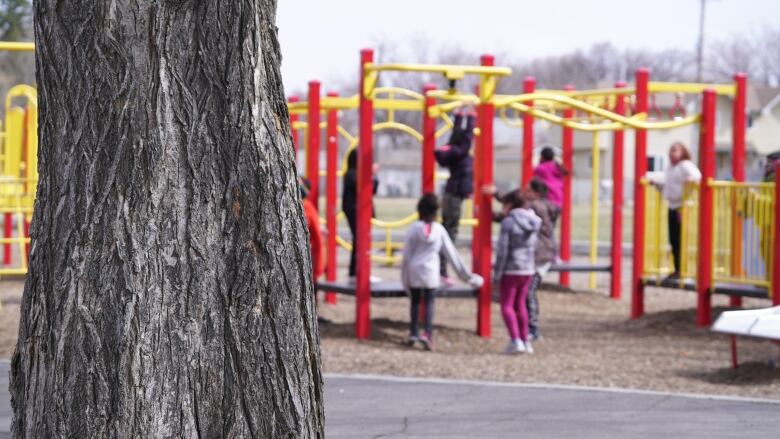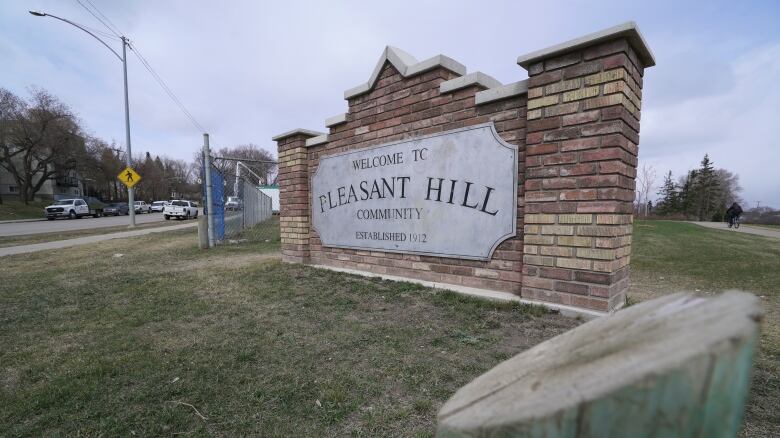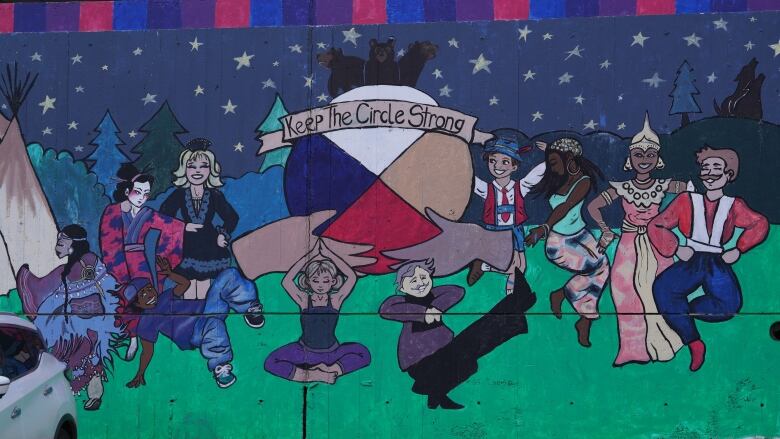Treaties beyond the state: Honouring our responsibilities to each other
Its our sacred responsibility to listen, learn and act

This story is part of the Black on the Prairies project, a collection of articles, personal essays, images and more, exploring the past, present and future of Black life in Alberta, Saskatchewan and Manitoba.Enter the Black On The Prairies project here.
This First Person piece was written byErica Violet Lee,a nhiyaw (Plains Cree) poet and community organizer based on the west side of Saskatoon.
For more information about CBC's First Person stories, please seethe FAQ.
This is all you have owned
from the first outcry
through forever;
you can never be dispossessed.
- Derek Walcott, "Earth".
I first learned of the Nobel Prize-winning Saint Lucian poet Derek Walcott while I was in graduate school at the University of Toronto. Although he taught writing at the University of Alberta and served as the university's first distinguished scholar in residence, I did not know his name until I moved away from the Prairies.
As soon as I read Walcott's poetry, it made sense to me that he had resided on the Prairies. His words have spaciousness and honesty that remind me of home.
I grew up and still live in Pleasant Hill, a neighbourhood on the west side of Saskatoon. Pleasant Hill is a Native space: predominantly Cree, along with Mtis, Anishinaabe, Dene and Inuit. It is a poor place, but it is ours.

Streetlights are often broken in Pleasant Hill. At night the streets are dark in a way that would never be considered safe or acceptable in the east side, the suburbs or downtown. Rather than installing proper streetlights for our neighbourhood, the City of Saskatoon bought a police plane with a heat-seeking radar. It makes loud, low circles above us at night.
In Pleasant Hill we call our community the hood, the ghetto, the inner-city and the west side. These terms are appropriated from Black urban life. They are used against us by white people, but we claim them as a source of pride and belonging. These geographical terms place us outside of whiteness, but most importantly signify our ties to Black history and presence.
Fear of Indigeneity is a fear of Blackness is a fear of the dark and all those left "uncivilized" by assimilation.
We have always resisted
While in Toronto, I began to question why I had gone nearly three decades without a Black teacher or professor on the Prairies, and why I had learned so little of this country's Black history.
As a politically aware Native woman, I knew that the erasure of Blackness and Black communities was a deliberate action meant to uphold white supremacy, but I had no idea how deep the erasure and oppression went.
While there have always been strong relations between Black and non-Black Indigenous people here, anti-Blackness has impacted our kin in deeply devastating ways.
I recall the trial of Gerald Stanley, who was acquitted in the death of Colten Boushie in 2018. When one of Colten's friends a young Black Nehiyaw man who witnessed the killing was brought to the stand to testify, his interrogation was arguably more severe than Stanley's.
Our movements cannot flourish on their own.- Erica Violet Lee
Of course, trauma is never the whole story. I am uninterested in horrifying statistics without names, or stories of trauma where Black and Native people are denied agency.
We must read critically and research more broadly to find the sparks of love that kept folks alive through it all. We owe it to each other to cultivate nuanced understandings of one another's lives as Black people and Native people.
Even in the face of the most oppressive experiences, we have always resisted.
When we talk about treaties, the ones between Indigenous nations and the Crown as represented by the Government of Canada take centre stage. However, treaty relationships on this land go back further and exist deeper than any broken promises made by the state.
As a non-Black Cree who grew up on the west side of Saskatoon, I am forever indebted to the history of Black resistance and thought that created frameworks of urban freedoms.
Stories of freedom beyond what we are told is safe or acceptable to imagine tie us together as Black and Native women. Our lives as Black and Native people in the Prairies are not doomed to end in tragedy. We find and make ceremonies of freedom with our very movements through the Prairie cityscapes and the rural roads where we were never meant to be.
The thought of freedom is designed to be impossible
While in Toronto, I rented an apartment from my friend Anique, who was in Trinidad visiting family. The apartment building is an Afro-Caribbean stronghold, a beautiful stone building on St. Clair West and Oakwood managed but not owned by a Jamaican man who lost his son to a police shooting. When I came home from school, it would be filled with the smells of delicious foods I could not identify.
I did not taste plantain, or roti, or jerk chicken until I came to Toronto. From theory to literature to music, from food to poetry, from the blues guitar to hood feminisms and the overflows of all these things brought together, Black women have made my lifemore free.
At Pleasant Hill Community School, I danced fancy shawl and jingle dress with the powwow troupe. I didn't have regalia of my own, like most of the urban Native kids, so we borrowed ours from the school's collection. I remember a girl a few years older with a beautiful red jingle dress hand-sewn just for her. She seemed like such an adult, the way she held herself like an NDN queen.
These days police brutality and the deteriorating living conditions in Pleasant Hill take up the most space in my mind. With ever-increasing drug overdoses in the city and the Government of Saskatchewan opting to fund new prisons instead of Prairie Harm Reduction's safe consumption site, we are struggling.
In the hood, the thought of freedom is designed to be impossible. It feels impossible to escape the violence, poverty and colonization that continues to this day.
Policing and carceral systems are a continuation of slavery and genocide. The RCMP was established to control the movement of Indigenous people on the Prairies, and prisons were built to contain Indigenous lives and mobility.
To paraphrase what Black activists, intellectualsand artists have long known, slavery was never abolished, it simply transformed into the prison and the police state.
Abolitionist reawakenings
But abolitionist movements are growing on the Prairies. We owe our abolitionist reawakenings to Black women and Black communities since time immemorial.
As occupied, stolen and displaced peoples, we are deeply harmed by the imposition of colonial languages and religions on us. I run out of words to describe the violence that Black and Indigenous people face in this world. This has led me to realize that written words are insufficient for the work we must do to build relationships between Black and Native women.

Here, I understand what the elders mean when they say treaties are alive. The movement to get our land back is nothing if we are not simultaneously working toward reparations for Black people who were stolen from their lands only to be denied belonging within the state called Canada.
We do not live on our own. We do not write on our own. Our movements are ancient and they are entangled.
I want to move through the world in a way that acknowledges Black women as the originators of so much freedom work without reducing our existences as Black and Native women to a harmful and impossible comparative study.
I think we need to be careful with each other. We cannot lie, saying we live on our own. We cannot pretend to write on our own. Our movements cannot flourish on their own.
What do our Black relatives on the Prairies and beyond dream, hope and wish to build in their lives? What can we do, materially, as non-Black people to ensure these dreams are not deferred?
In pursuit of a time when Black folks are allowed to breathe and Black communities are able to flourish, it's our sacred responsibility to listen, learn and act.
The Black on the Prairies project is supported by Being Black in Canada. For more stories about the experiences of Black Canadians, check outBeing Black in Canada here.














_(720p).jpg)


 OFFICIAL HD MUSIC VIDEO.jpg)
.jpg)



























































































